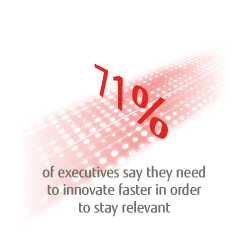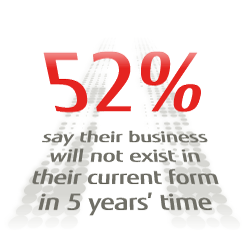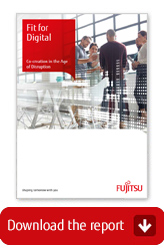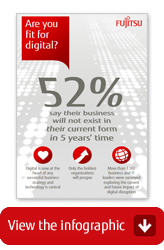Archived content
NOTE: this is an archived page and the content is likely to be out of date.
Business evolved: survival of the fittest
Technology may be recognized as the great enabler for organizations seeking to thrive in a digital world, but it is not the catalyst for disruption.
Customer demands
For 45% of respondents, customers are seen as the most influential force outside of their organization driving their response to digital disruption. This compares to around 31% who say the same of competitors, while less than a fifth specify partners and third parties (18%) or shareholders and citizens (5%).
With customers and new competition driving digital disruption, many business leaders worry of the consequences of failing to meet new customer demands and falling behind.
With customers and new competition driving digital disruption, many business leaders worry of the consequences of failing to meet new customer demands and falling behind.
A new speed of innovation
 Much of the concern seems to originate with the idea that the pace and scale of change are almost impossible to keep up with.
Much of the concern seems to originate with the idea that the pace and scale of change are almost impossible to keep up with.
Business leaders say that digital disruption has helped to drive more innovation (56%), but also increased competition (46%) and created a faster pace of change (42%) as well.
As such, 71% of those surveyed say digital disruption means organizations need to innovate faster in order to remain relevant.
Competition is fiercer and more diverse
 While respondents say that their digital agenda is driven primarily by their customers, they also acknowledge that their competitive base itself is shifting as a result of digital disruption. Although 32% of business leaders say that digital disruption in their sector is being driven by an established industry player, 29% say that it is as a result of an established organization entering the market from outside.
While respondents say that their digital agenda is driven primarily by their customers, they also acknowledge that their competitive base itself is shifting as a result of digital disruption. Although 32% of business leaders say that digital disruption in their sector is being driven by an established industry player, 29% say that it is as a result of an established organization entering the market from outside.
Not only are organizations faced with out-innovating their traditional competition in order to stay relevant, they now need to keep pace with - or, ideally, outpace - new challengers from adjacent industries.
- 75% believe their sector will fundamentally change within the next five years
- 52% say that their own organization will not exist in its current form by 2021
The majority of organizations may have taken steps to safeguard their long-term success, but their journey is far from over. Many believe they need a digital partner to help them take the next steps.
Discover the benefits of co-creating with partners >>
Discover the benefits of co-creating with partners >>





